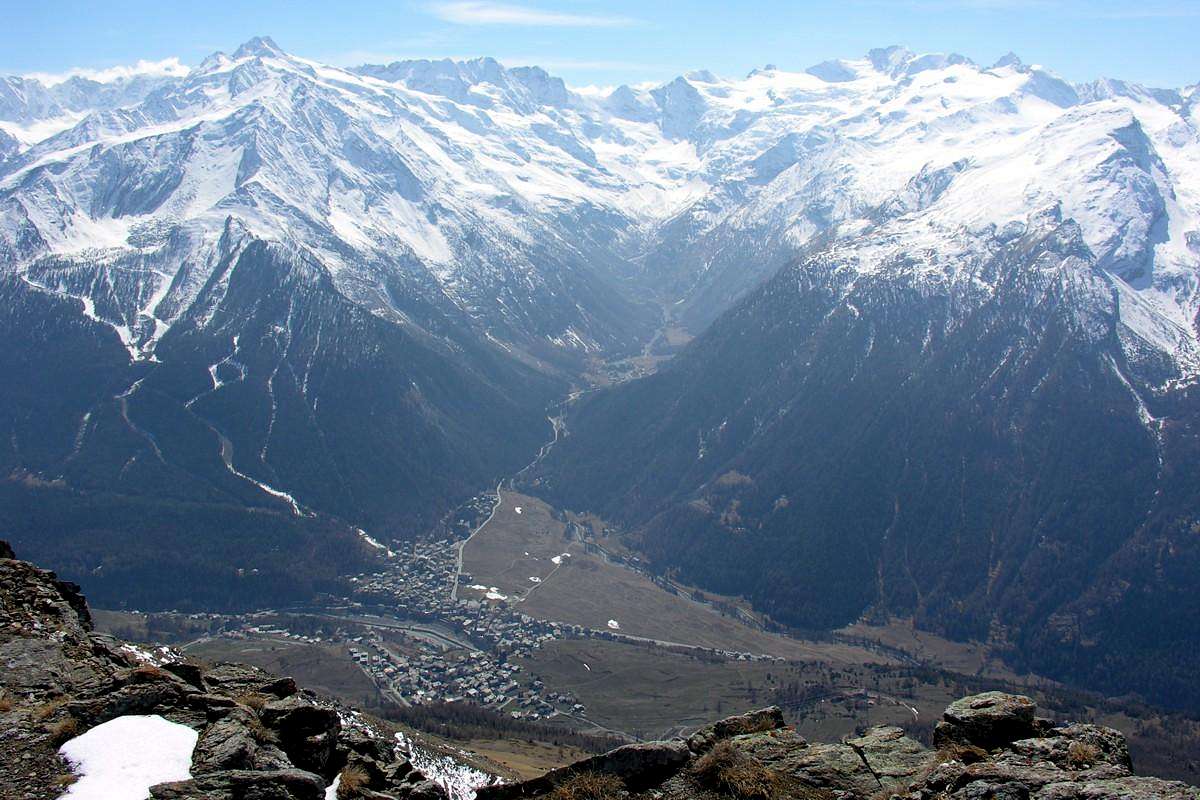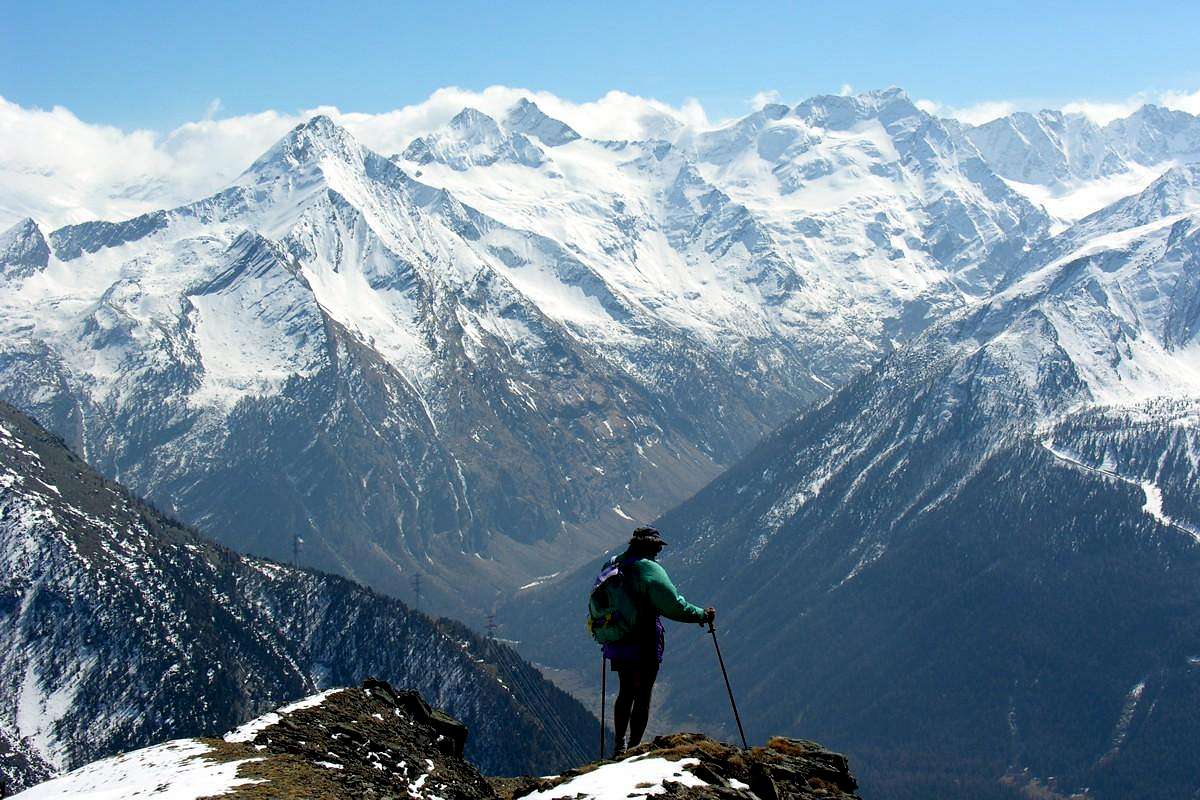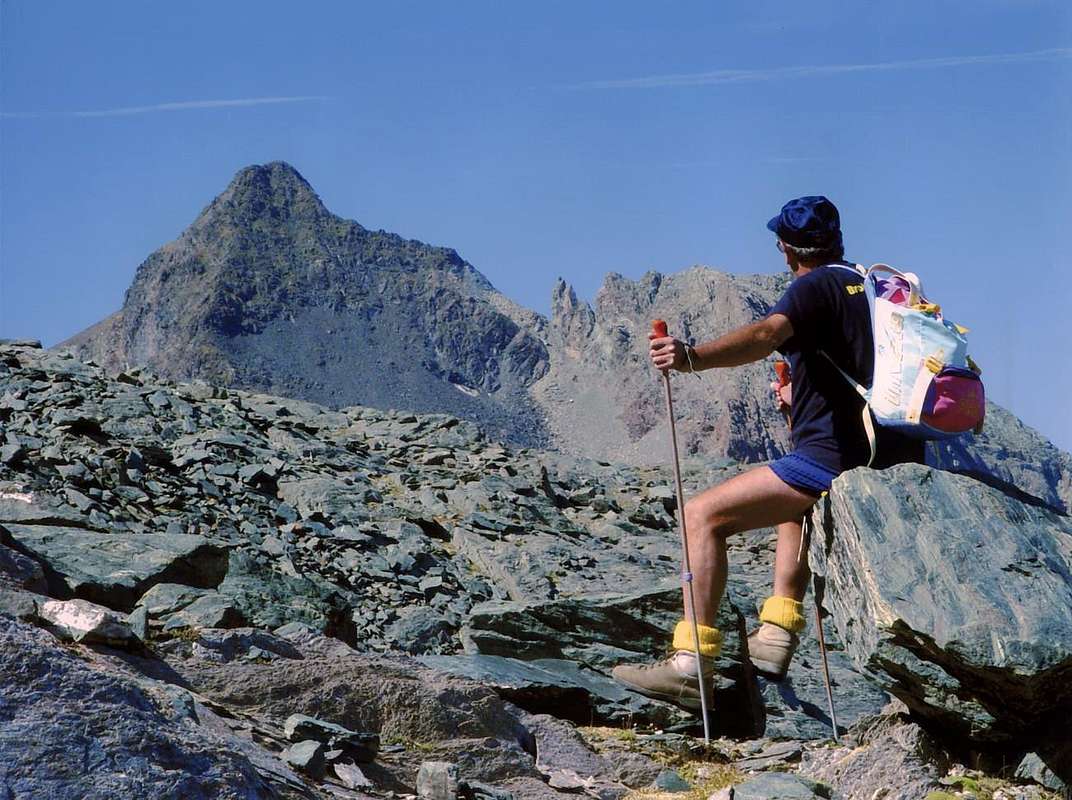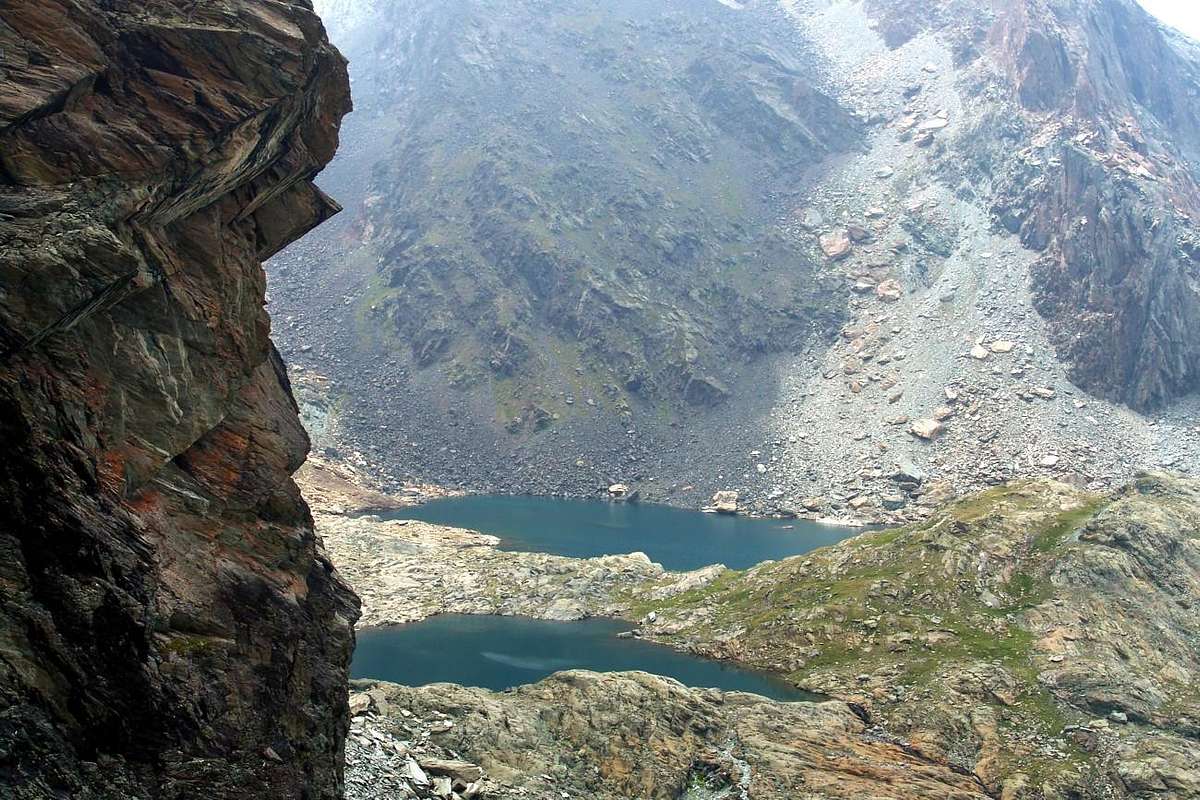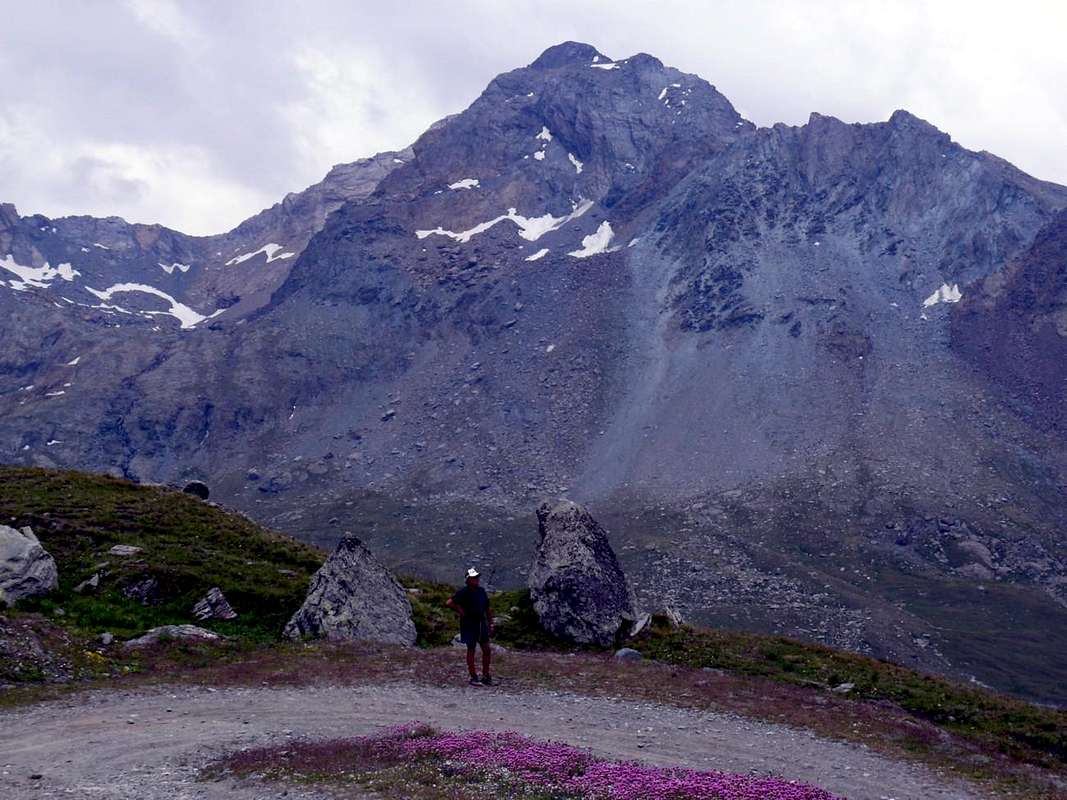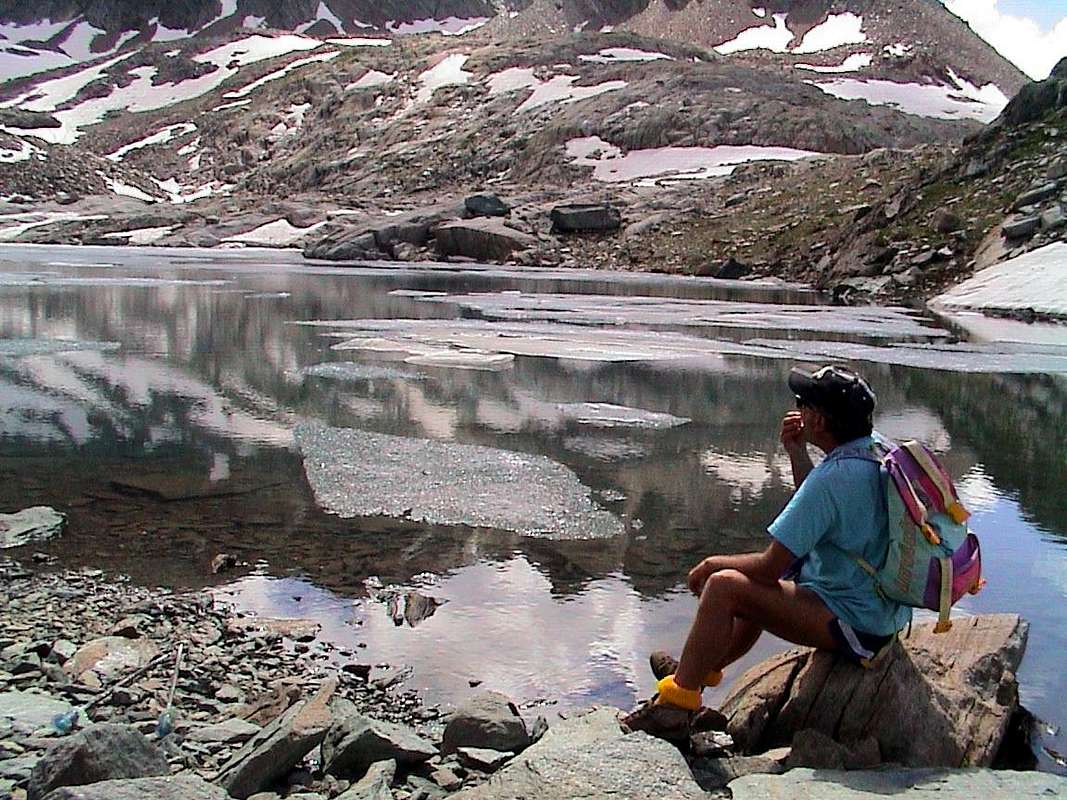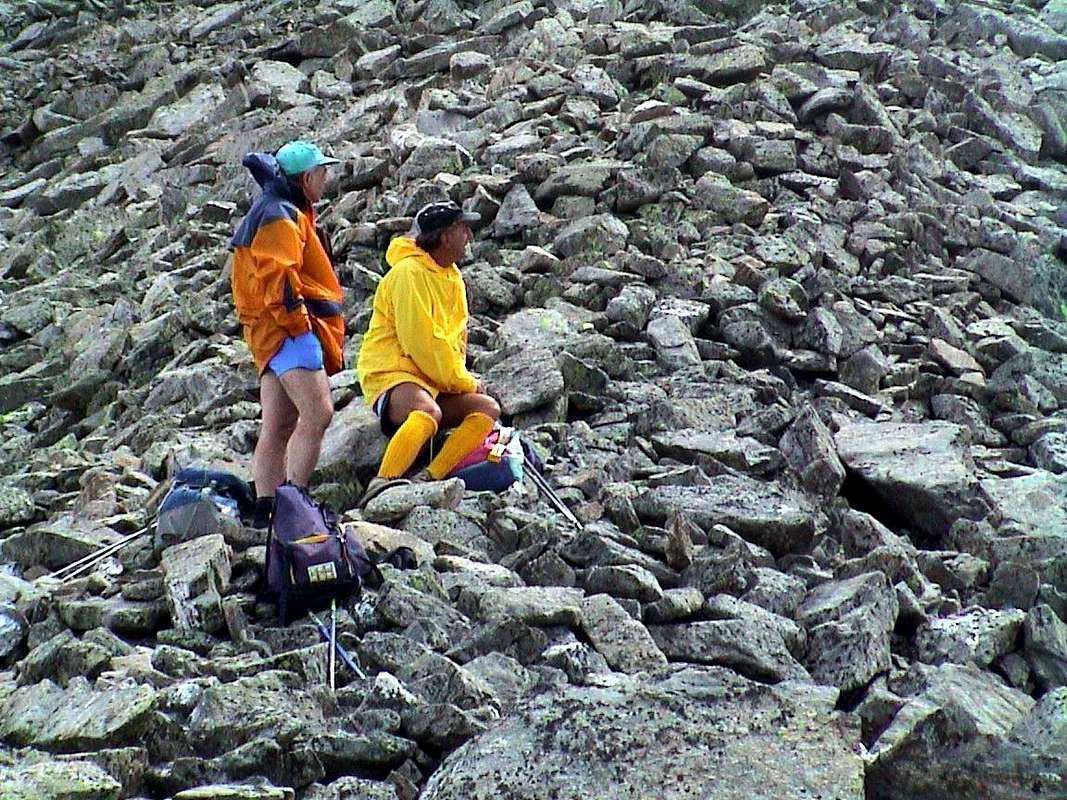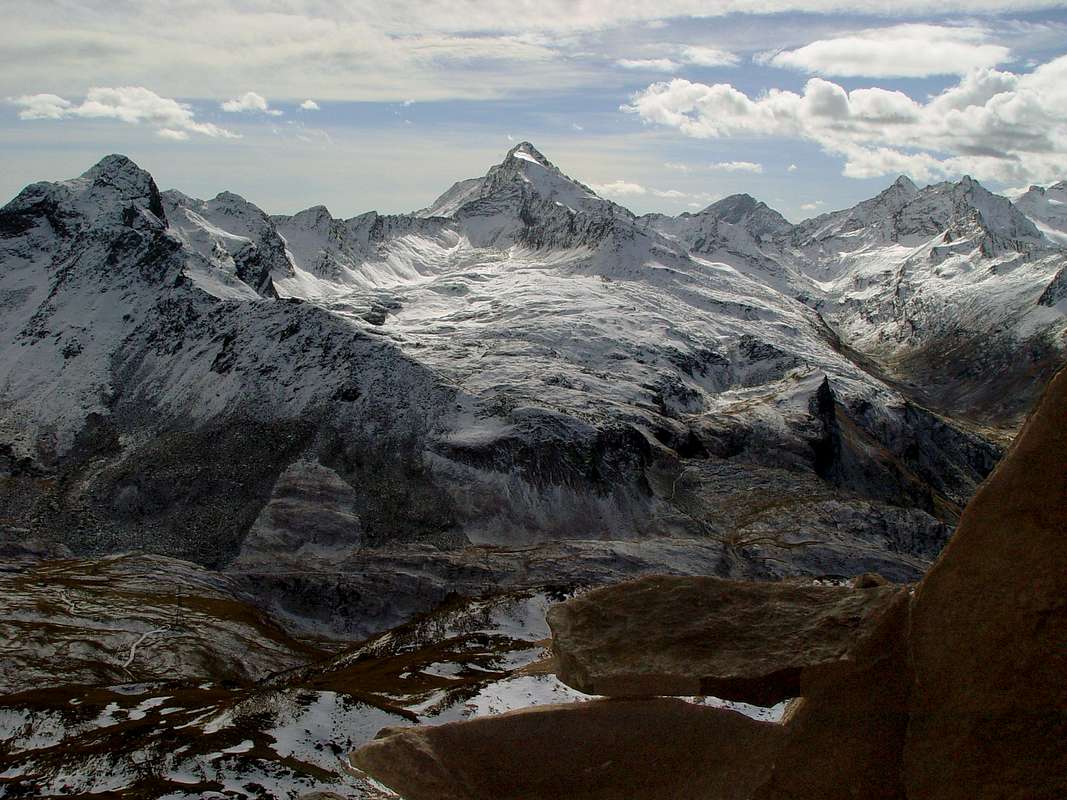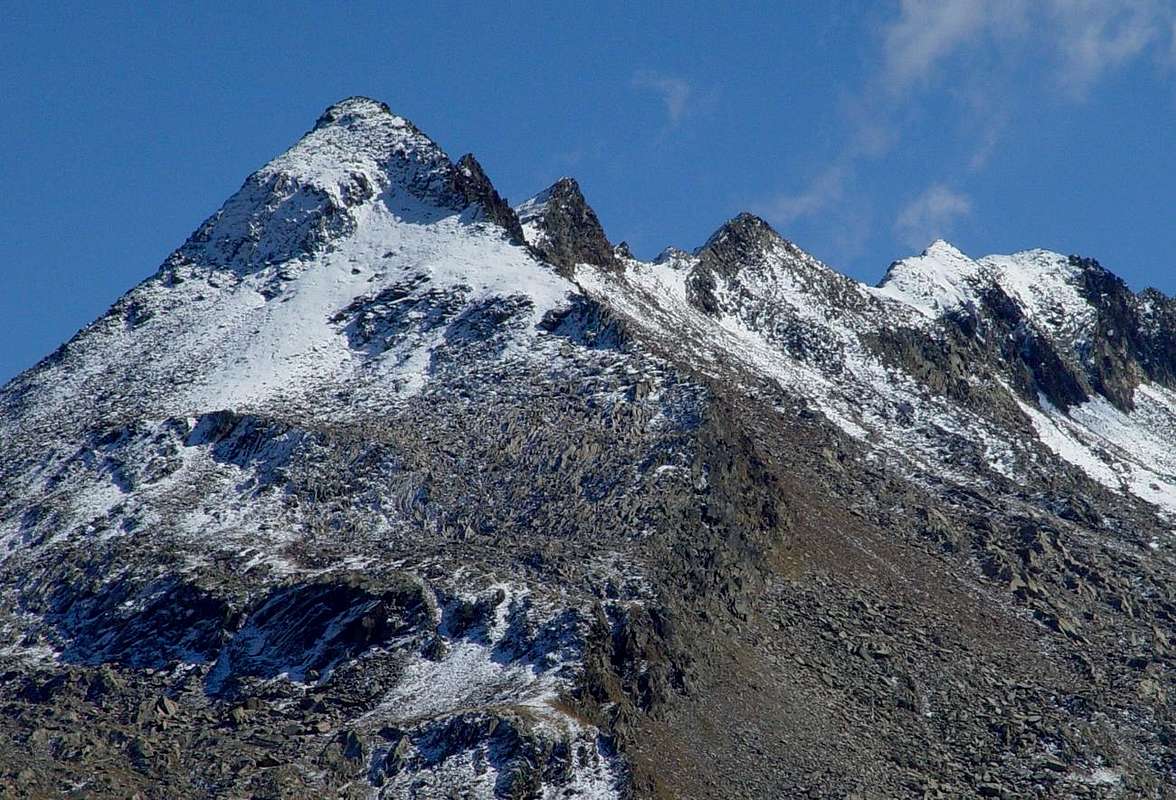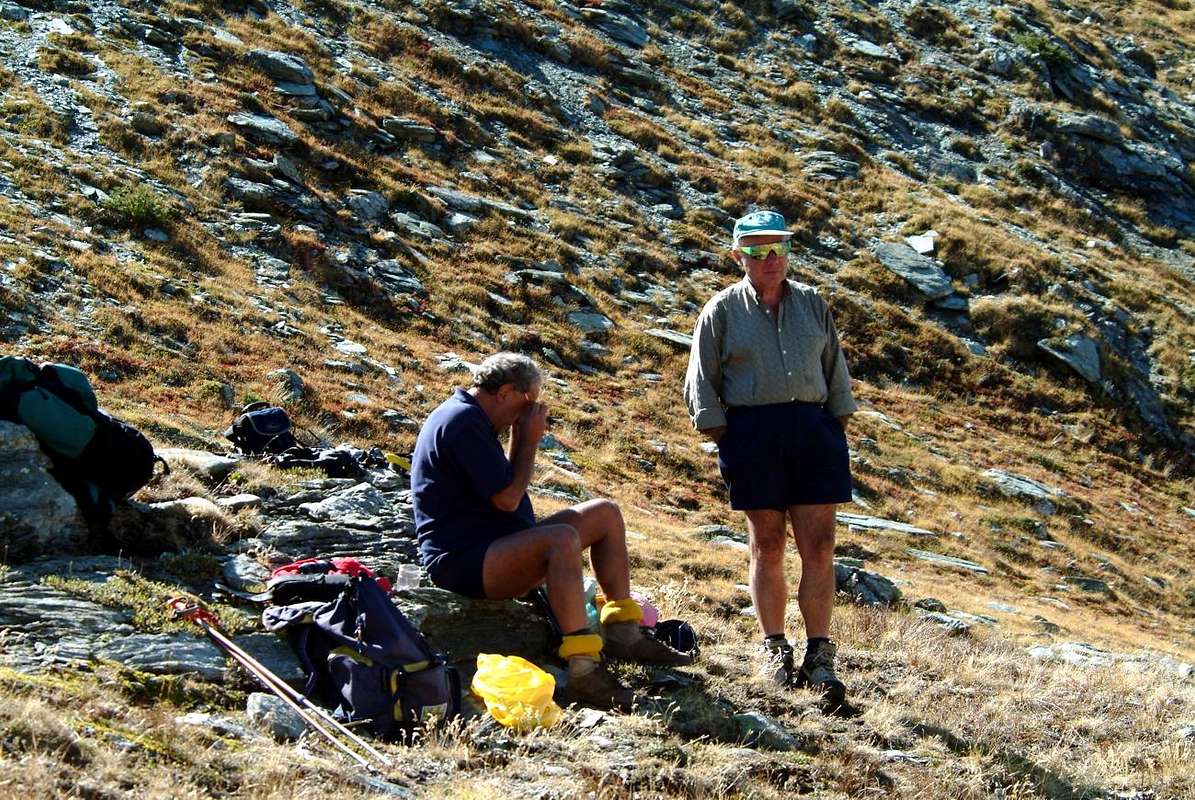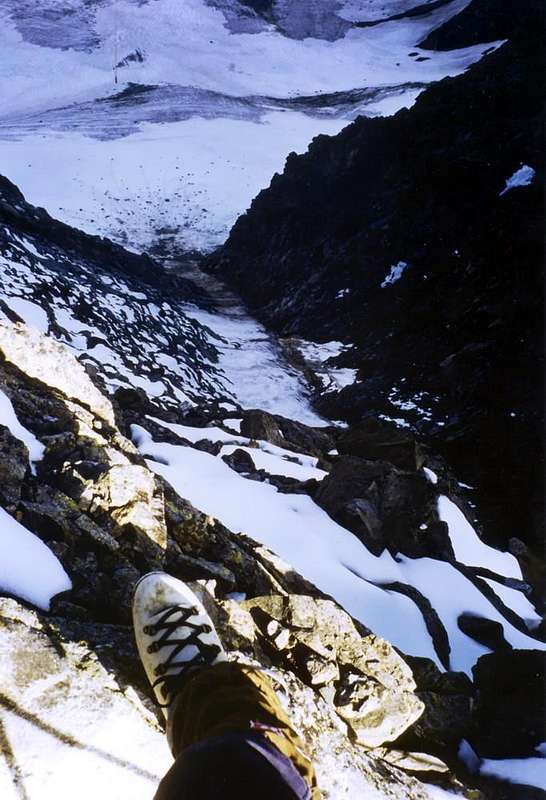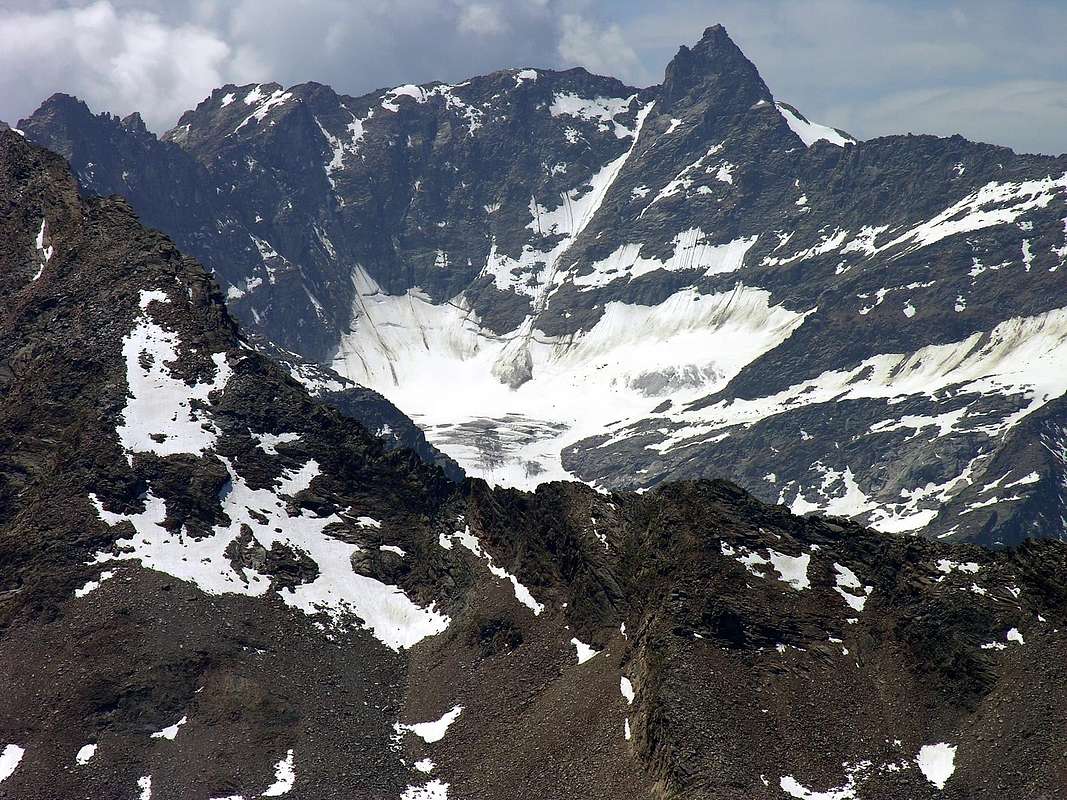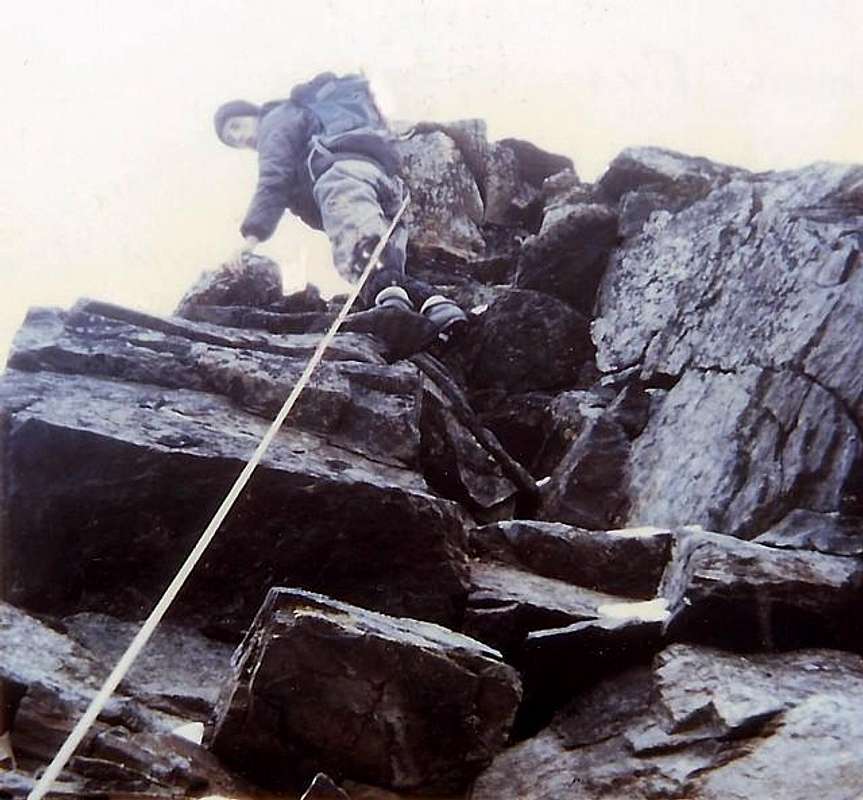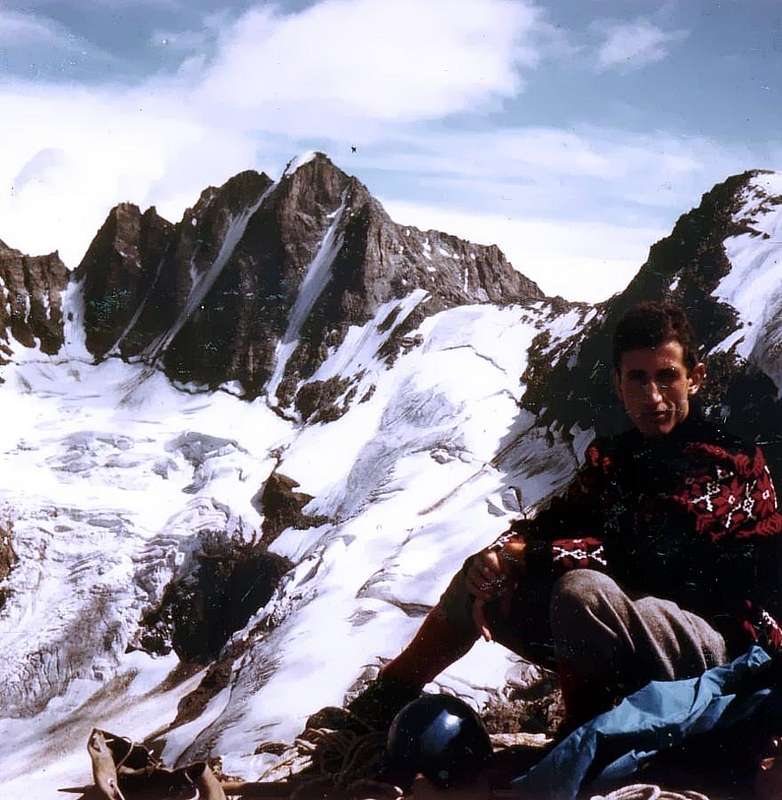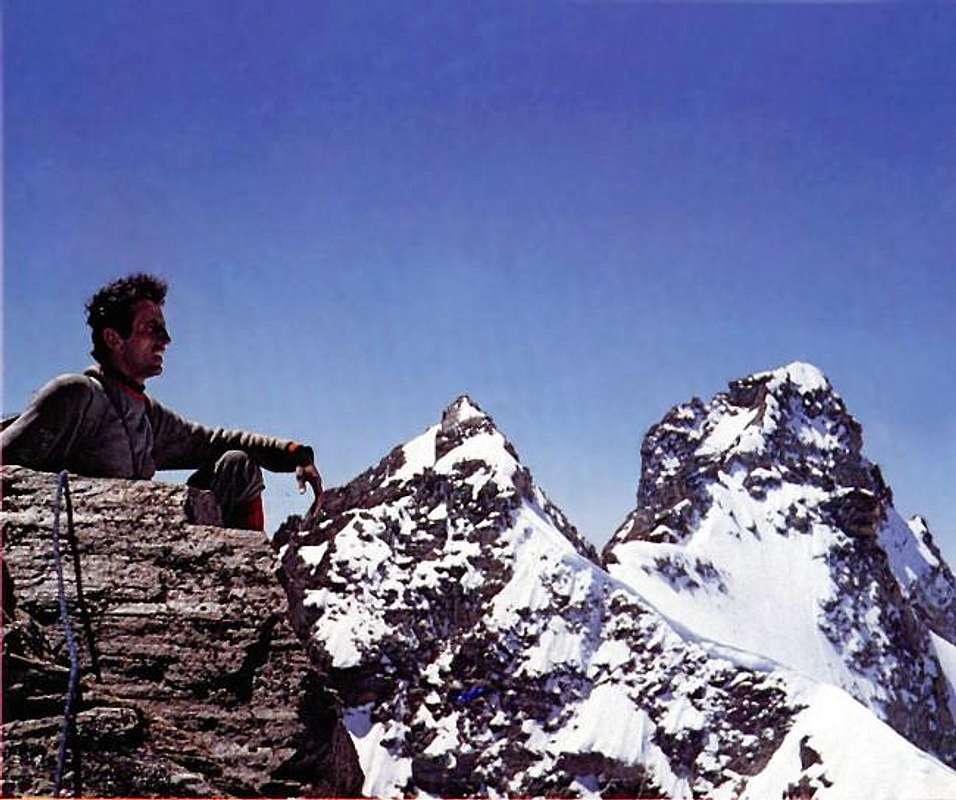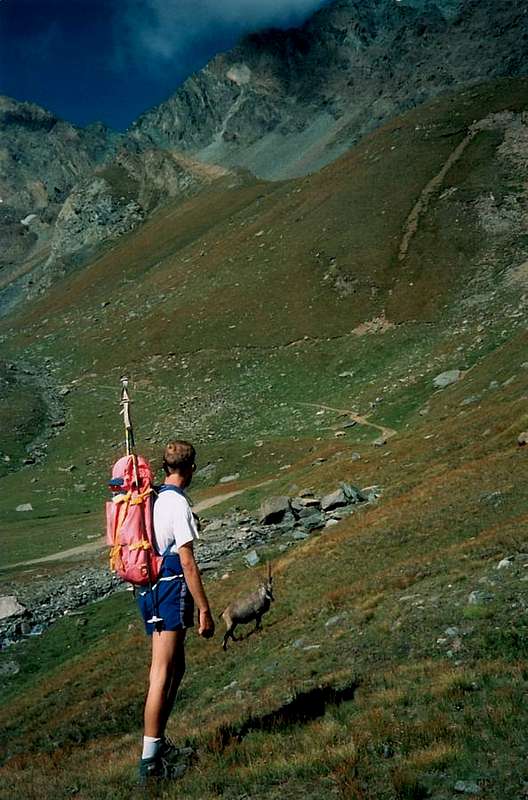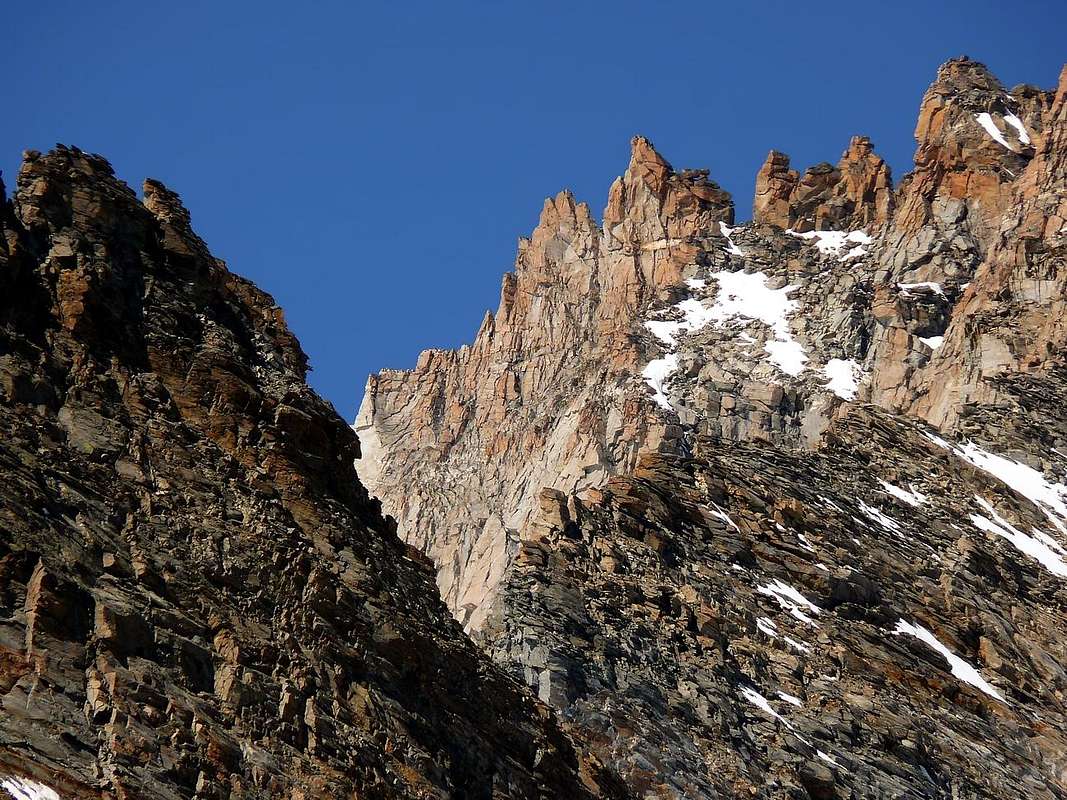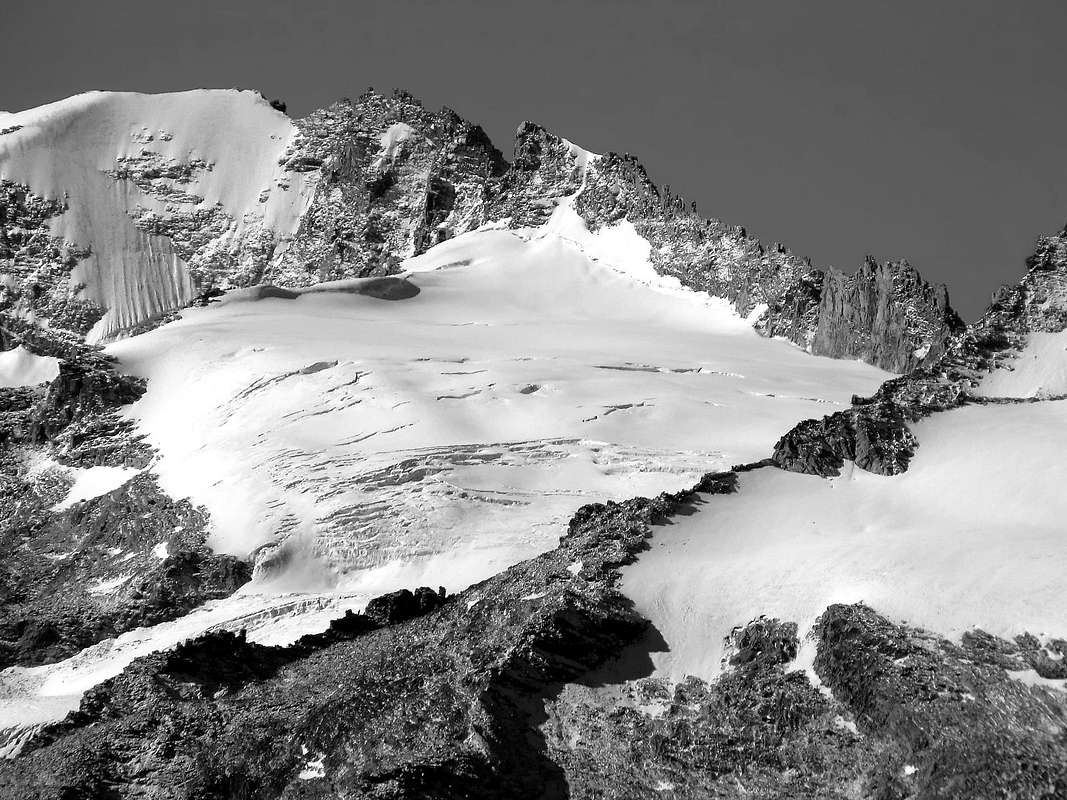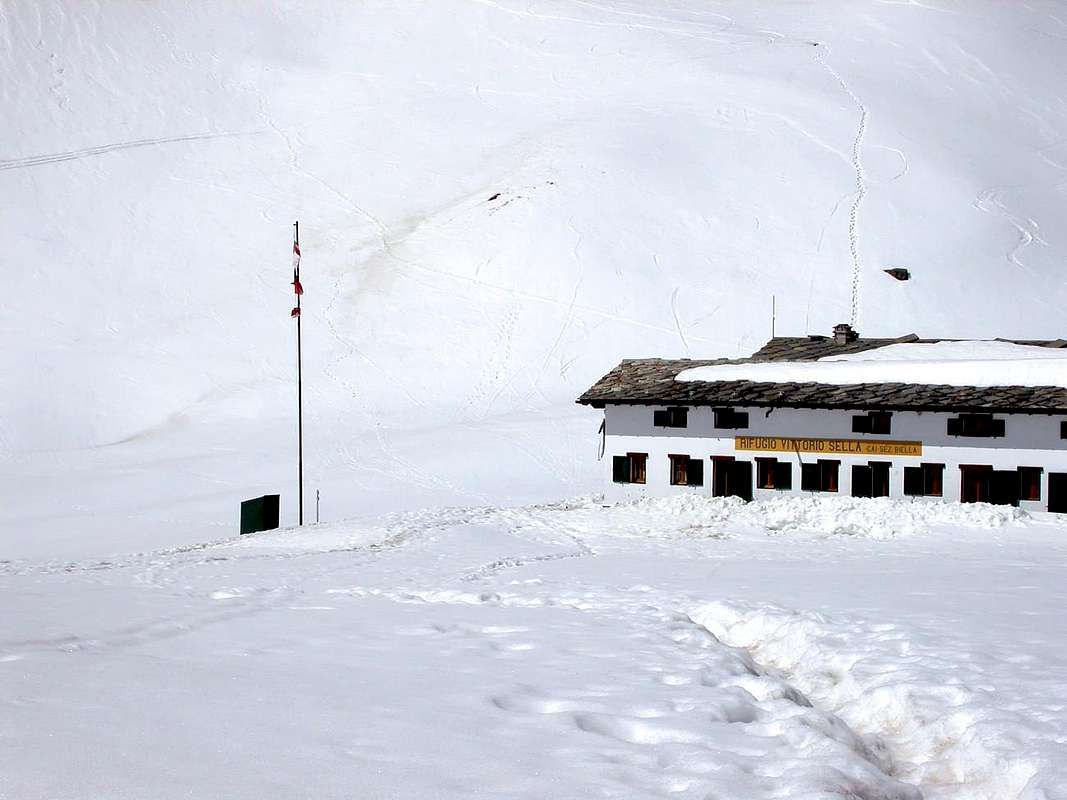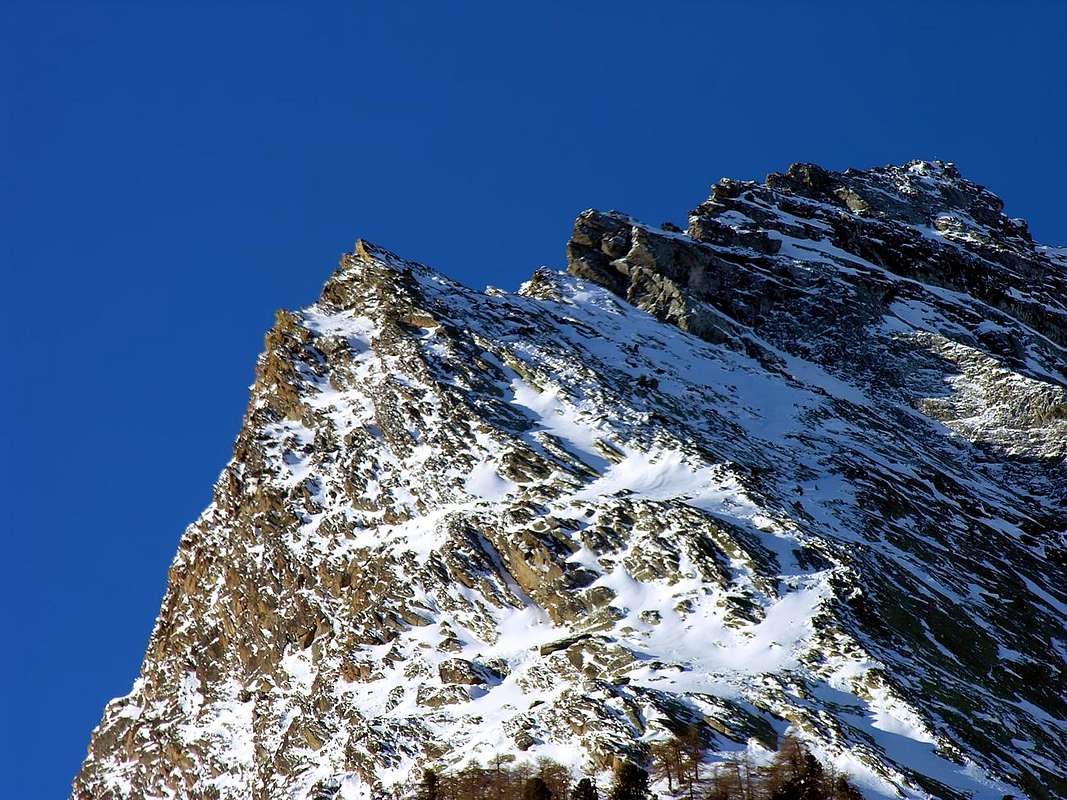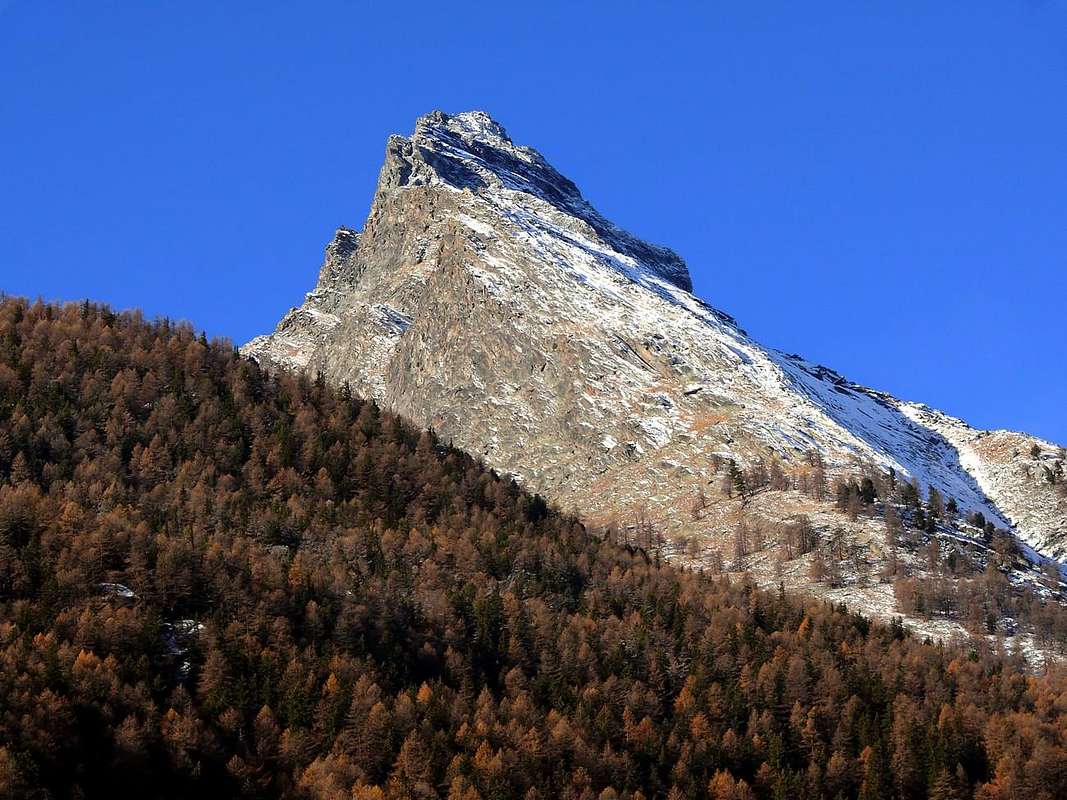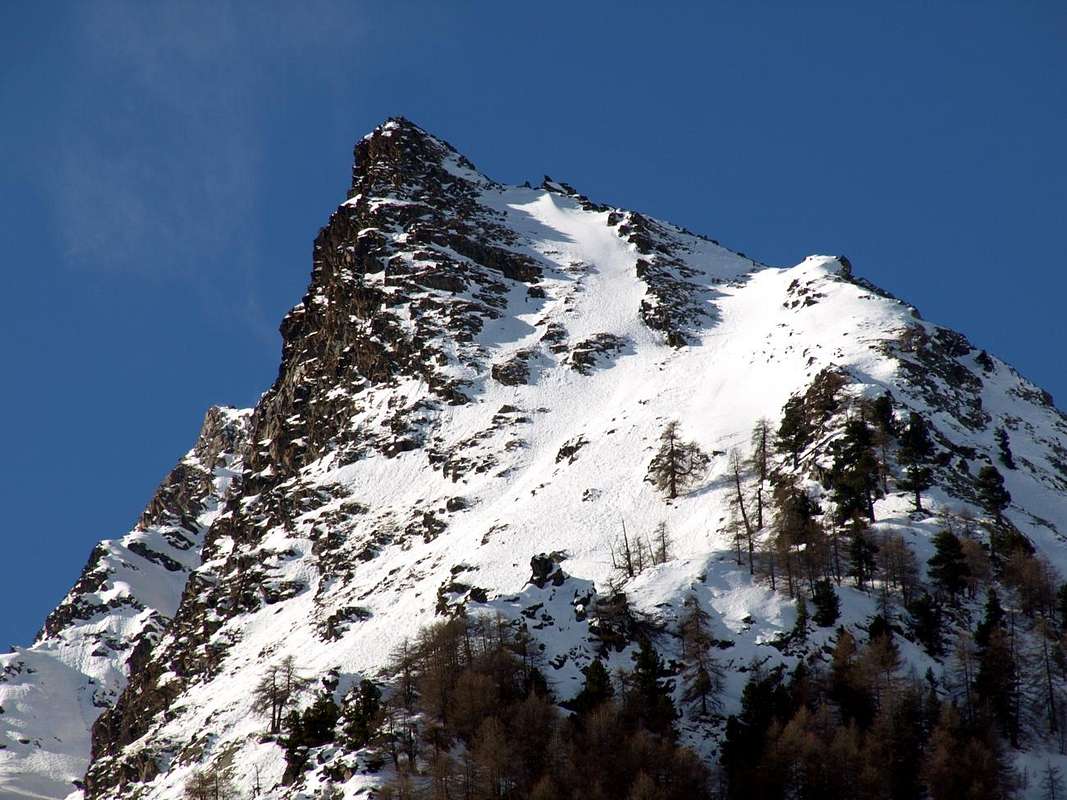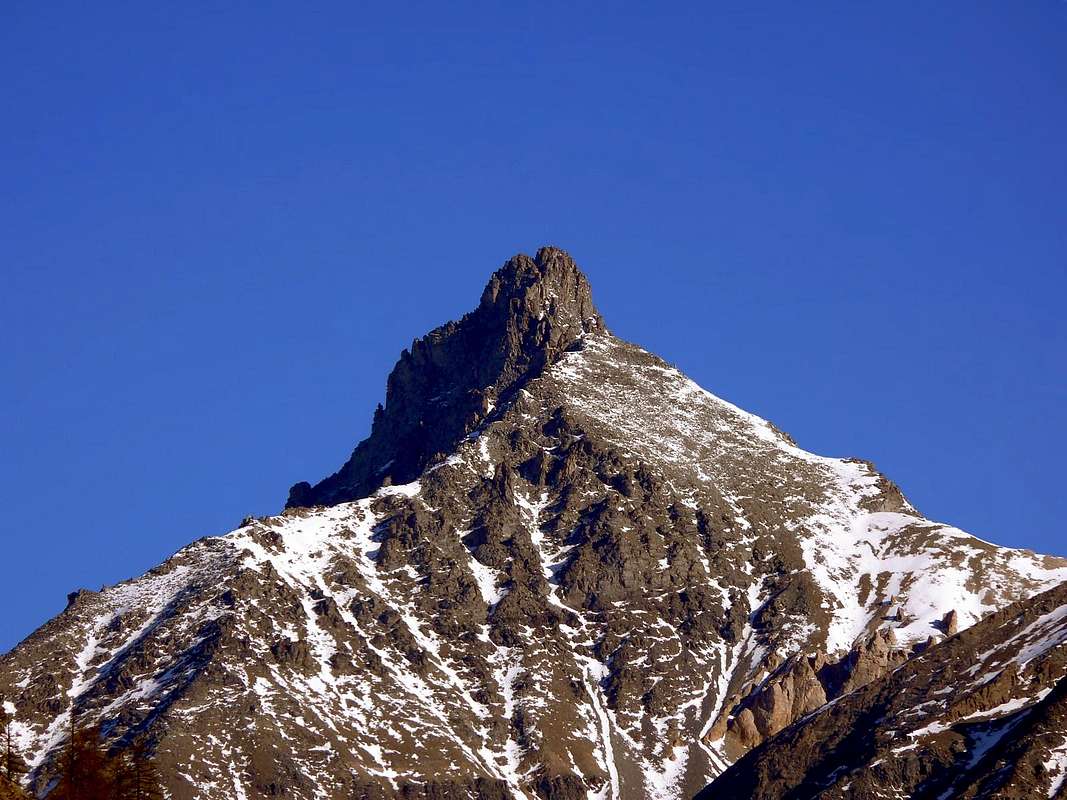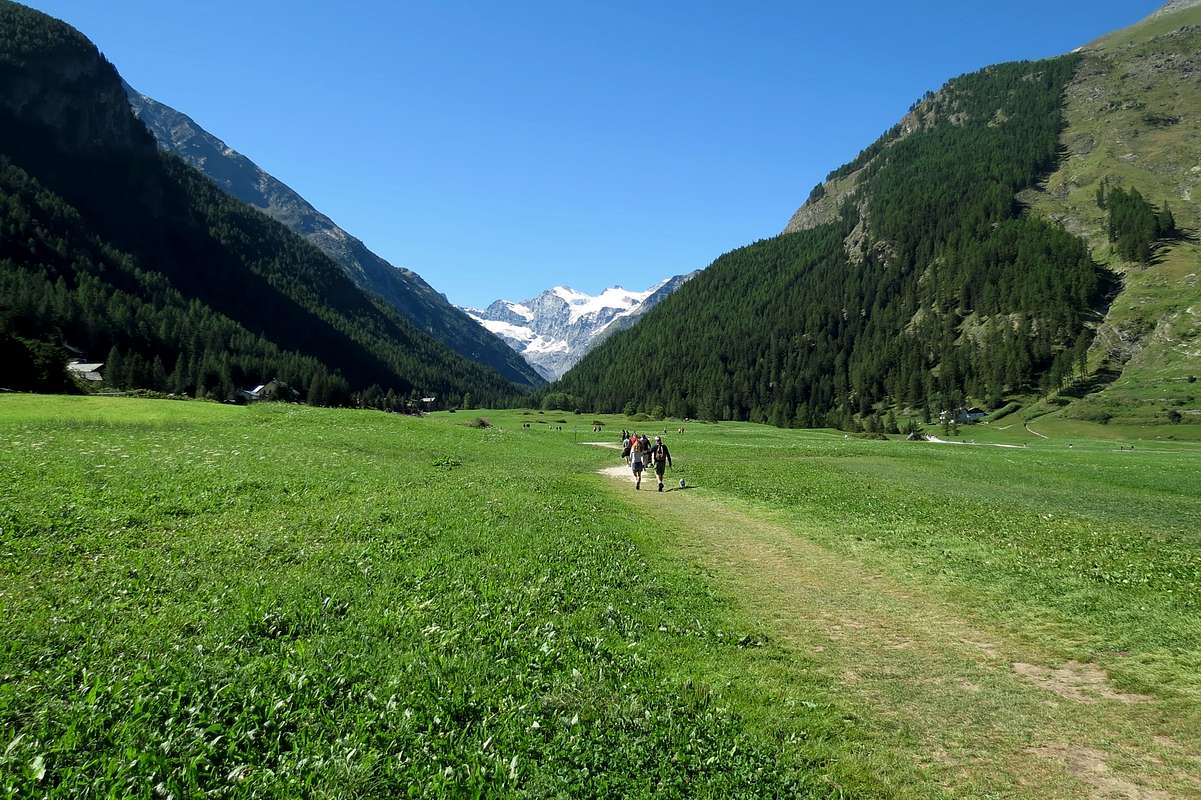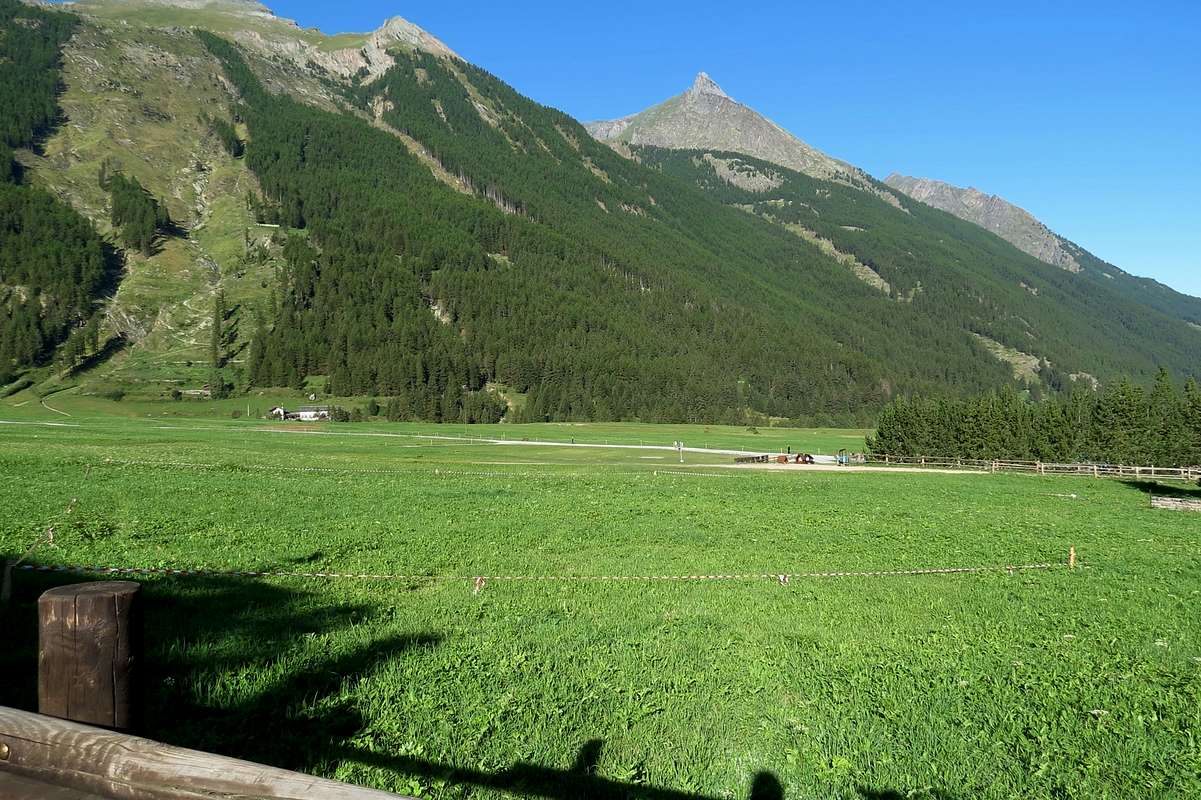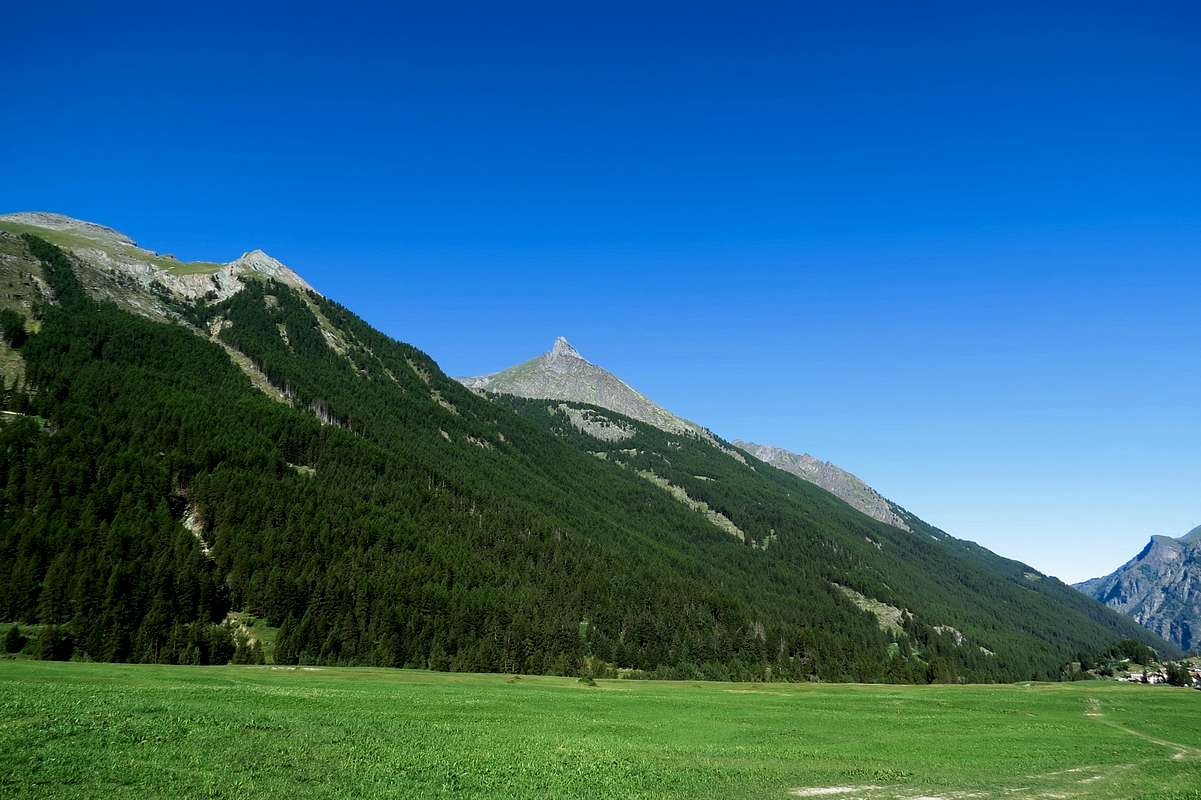-
 4736 Hits
4736 Hits
-
 79.78% Score
79.78% Score
-
 11 Votes
11 Votes
|
|
Area/Range |
|---|---|
|
|
45.51830°N / 7.26654°E |
|
|
Hiking, Mountaineering, Trad Climbing, Sport Climbing, Bouldering, Ice Climbing, Aid Climbing, Big Wall, Mixed, Scrambling, Via Ferrata, Canyoneering, Skiing |
|
|
Spring, Summer, Fall, Winter |
|
|
13324 ft / 4061 m |
|
|
Note
La montagna chiama i suoi figli, ed essi rispondono fedelmente al suo appello… Osvaldo Cardellina, Diario alpinistico, 1964-65 Page texts: @ OsvaldoCardellina "Osva", passed away on May 2, 2022. Page owners: Christian Cardellina e Osvaldo Cardellina. Any updates from September 12, 2022: Antonio Giani, page administrator, friend and climbing companion. Testi della pagina: @ OsvaldoCardellina "Osva", scomparso il 2 maggio 2022. Proprietari pagina: Christian Cardellina e Osvaldo Cardellina. Eventuali aggiornamenti dal 12 settembre 2022: Antonio Giani, amministratore della pagina, amico e compagno di salite. |
Coing with Iseran Overview
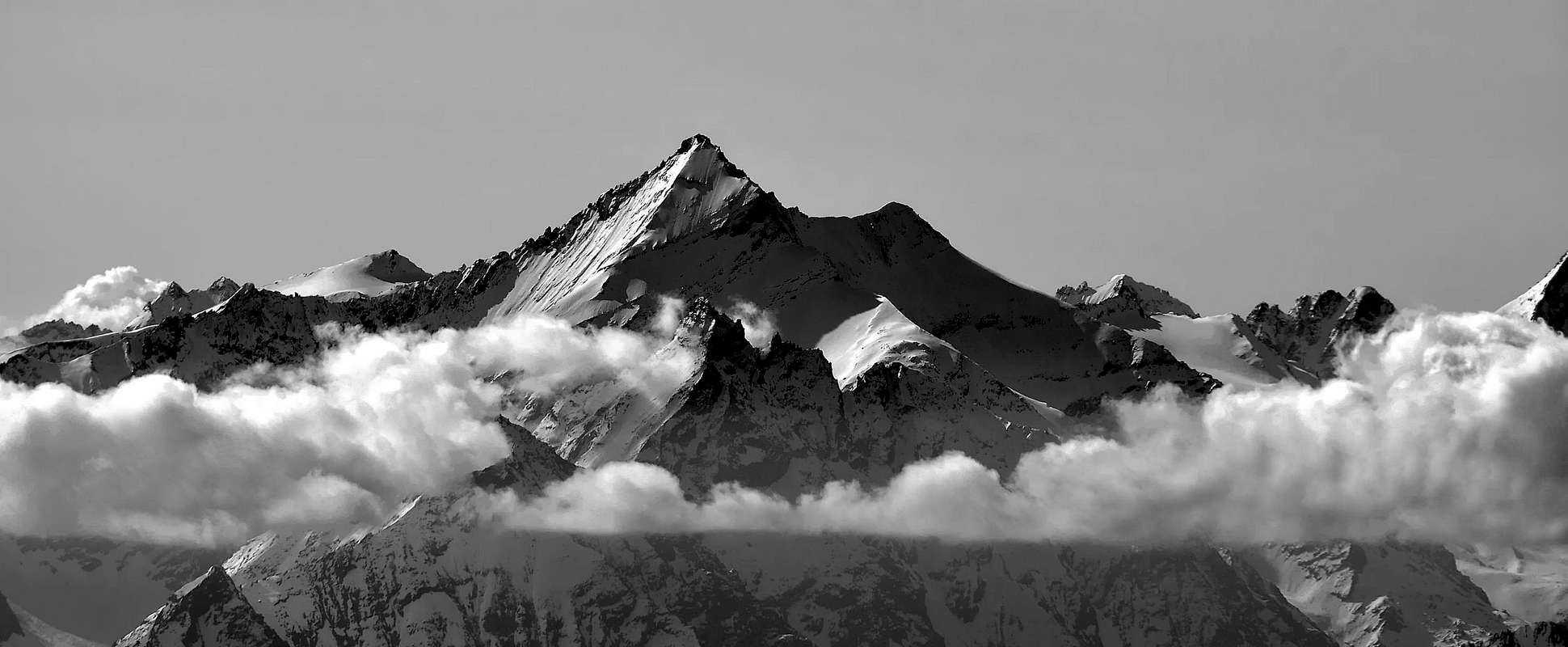
Getting There
BY CAR:
- From TORINO, MILANO, etc: Motorway A5. Exit at IVREA or Quincinetto (PIEDMONT) AOSTA West/Aymavilles, Cogne Municipalities.
- From Aymavilles (646m) towards Cogne Valley: Vieyes (1.158m) or Sylvenoire Village (1.331m), Mario Gontier private Shelter, through path in Nomenon Walloon. To Cogne (1.534m); through Main Road. To Valnontey (1.678m); Money, Alessandro Martinotti, Stefano Borghi, Carlo Pol, Marcello Gerard-Ettore Grappein, Lionello e Lucio Leonessa, Mario Balzola, Luciano Gratton, at the base of the district that goes from Punte Patrì East to the West to Punta Rossa, passing under the Gran Paradiso. (This last from Epinel (1.436m) or Crétaz (1.494m) Fractions) Bivouacs, through paths, moraines and glacier, & Vittorio Sella Refuge, through muletrack). From Lillaz Fraction (1.607m) to "Sogno di Berdzé", under the Fenêtre of Champorcher, and Guido Antoldi-Laura Malvezzi Refuges, by dirt road, muletrack or paths in Urtier and Valeille Vallon. To Gimillan Village (1.785m), Franco Nebbia Bivouac, with path in Arpisson Vallon. All the three last through Regional Roads from Cogne.
- From FRANCE: through the Mont Blanc Tunnel to Entrèves-crossroads to Vény/Ferret Valleys - Mountain Guides of Courmayeur - La Saxe Rock Gym - Courmayeur.
- By Little Saint Bernard Hill, closed since November until half May to La Thuile Valley - Pré Saint Didier - Courmayeur. It is not necessary to take Motorway A5: you can drive on SS.26, in the direction of AOSTA - IVREA - TURIN.
BY PLANE:
- Aeroporto "Corrado Gex" Saint Christophe (Aosta).
Miserino's Conca
Acque Rosse Vallon
^^^^^^
Un'antica pista per il Minerale attraverso le Acque Rosse. Quando dalla Chiesetta del Cret raggiungi la Cascata e l'Alpe del Tsavanis o Chavanis tu passi al di sotto della Cote Piemont. Là sopra passava l'antica via trasportante il minerale delle Vene di Larsinaz, Costa del Pino e Colonna che "viaggiava" verso il Canavese ed Eporedia (Ivrea) in Piemonte. A quei tempi non esisteva la galleria che, trapanando la montagna attraversava con quel lungo tunnel di 11 Kilometri, esce fuori ad Eaux Froides (Pila); per poi essere trasportato con la funicolare ad Aosta allo Stabilimento Ansaldo (attuale Cogne S.P.A.). Ma é cosa del secolo passato. Ma prima? Prima, giunto alla successiva Alpe Broillot o Broillà, veniva caricato su una bella strada carraia (ne rimangono i resti), poi mulattiera, prendendo la strada per il Colle dell'Arietta, appena più ad Oriente della Conca del Miserino. Da lì lo facevan scendere verso San Besso ed il Vallone del Rancio che a sua volta sfocia in quello ben più importante della Valle di Locana, chiamata anche Valle dell'Orco dal nome del suo principale torrente. Una via lunga e pericolosa poiché, passando sotto le pareti della Testa de la Nouva o Noua era alquanto esposta alla caduta di pietre. Inoltre una traversata esposta subito appresso al colle, con un diagonale in discesa, aumentava ancor più i rischi. Eppur passavano. Continuamente. Ma questa era soltanto una delle vie di trasporto, altrimenti, anticipando d'un vallone, si passava al Colle della Scaletta od a quello della Bocchetta del Rancio. Ma soprattutto a quello di Acque Rosse (causa il ferro) al termine dell'omonimo vallone ed ai piedi della Torre di Lavina. Per "entrare" in questo si deve, partendo sempre dal Broillot, doppiare sulla destra la Punta Nera seguendo un sentiero dapprima a Sudovest e poi a Sudest raggiungendo una serie di laghetti. Da qui la strada carraia si disperde in grande pietraia; cavalcando la "groppa" della stessa si raggiunge la parte finale ove la via, ormai ridotta a semplice sentiero, s'incunea a sinistra tra nevati e rocce in sfacelo raggiungendo lo stretto passo. Non doveva esser facile arrivar quassù col minerale, anche se lo sforzo maggiore era sicuramente quello fatto dai muli. Seguiva anche qui la lunga discesa verso il Vallone del Rancio e Piemonte, come nella precedente via. Un vallone particolare e "piatto", contenuto ad Est da questo grande spartiacque che unisce la Punta Nera alla Torre di Lavina. Sul lato opposto invece, dopo una cresta che scende a Nord-nordovest di questa formando le varie Punte d'Acque Rosse, si distende più tranquillo "scivolando" progressivamente verso il successivo Vallone del Bardoney.Bardoney Vallon
^^^^^^
Un vallone poco frequentato, quasi dimenticato. Non sono in molti che frequentano il Vallone del Bardoney, tranne la parte iniziale che, deviando a Sud dall'Alta Via n° 2, si porta al Casotto del P.N.G.P. per poi raggiungere l'Alpe del Bardoney a circa un terzo dello sviluppo del medesimo. Molti arrivati al Plan des Goilles, subito appresso al Casotto, giran sulla loro destra e raggiungono il bel Lago delle Loie o di Loee; una facile discesa, sempre a Nordovest, li conduce nuovamente a Lillaz chiudendo uno splendido giro escursionistico. Oltre, non é più sentiero particolarmente adatto a questa pratica. Si, esiste ancora la traversata che tramite il Colle di Arolla, passando sotto la Cresta Sud della Punta delle Tsesère, raggiunge dall'altra parte l'Alpe di Valeille; ma é l'unica. Dalla parte Est, verso le Punte di Acque Rosse e fino alla Torre di Lavina, scendon valloncelli dirupati e selvatici, più rivolti alle capre che agli uomini, e non offerenti sentieri. Sul lato Occidentale, prima del Colle d'Arolla, valloni abbandonati da Dio e dagli uomini raggiungono le Sommità delle Loie, di Bardoney e del Rossin; non trovando in loco sentieri, non ci và nessuno. O quasi. Più avanti il discorso diventa prettamente alpinistico sia che, dopo un laghetto, si voglia raggiungere il Colle di Bardoney per scendere al Bivacco Davito in Canavese, sia che si voglia raggiungere i resti del Ghiacciaio di Lavinetta. Nel primo caso si può andare alla Torre di Lavina per la Via Normale, oppure dal colle medesimo salire tramite la bella e frastagliata Cresta Sudovest. Nel secondo, appoggiando ad Ovest, si può raggiungere il più che selvaggio Col des Murailles Rouges, posto tra la Cresta Sud della Grande Arolla e la Punta di Forzo. Dallo stesso, in breve tempo, si possono raggiungere entrambe le Sommità. Ma il percorso, soprattutto nella parte bassa, é molto esposto alla caduta di pietre e le recenti Carte lo segnalan vistosamente in color rosso. Se non siete alpinisti, fermatevi all'Alpe del Bardoney, oppur fate il Giro del Lago delle Loie. Se siete degli Escursionisti Esperti attraversate il Colle di Arolla e scendete in Valeille. Se non siete né l'uno né l'altro andate a trovare il Guardiaparco con il suo cane pastore tedesco al Casotto. Se da Lillaz siete arrivati fin qui, siete già stati bravi. E basta ...Valeille

Valnontey

The Vallons most important & the recommended Excursions (19)
19) - Carlo Pol and Grappein-Gerard Bivouacs: Crossing in West on Tribolazione Glacier to East icy Face Piccolo Paradiso Northern and Southern Summits (N or Punta Farrar 3.925m, S or Méridional 3.926m) and traverse towards Col du Petit Paradis (3.870m) and final part through indented Nort-northeast Ridge (A/PD/PD+; 5h'30/7h'00).

Un vallone anche troppo frequentato. Sicuramente é il vallone, quasi una valle, più frequentato dell'intera Val de Cogne o perlomeno il più caratterizzante. Infatti anche se la Frazione di Lillaz, almen in estate, conosce un grande afflusso, per Valnontey questo fatto si verifica per tutto l'anno. La "Marciagranparadiso" le raggiunge entrambe, ma, mentre "sfiora" la prima, "avvolge" completamente la seconda. In estate invece la fan da padroni i Cavalli, che propongono grandi passeggiate, partendo ed arrivando tra qualche bancarella turistica. Ma la sua vera vocazione é altra; la sua essenza é Alpinistica. Grandi e belle montagne si dispiegano da Oriente ad Occidente, dove terminano con le slanciate piramidi della Grivola e del Gran Nomenon. Se si và a Gimillan o Dzimillan si può ammirar il tutto. Senza neppure pagare un centesimo o, se volete, un dollaro. Inizia a sinistra con le piste di Sci da discesa sotto il Montseuc e sopra il bel bosco di Sylvenoire. Poi, pian piano, sale formando le piramidi della Fenilia, di Vermiana e Valletta. Qui iniziano i ghiacci che s'allargano ai piedi della Tsissettaz e delle Patrì. Poi "esplode" la Catena degli Apostoli con le Torri di Sant'Orso, Sant'Andrea e del Gran San Pietro, ormai al confine con il Piemonte. Con un giro largo e paziente lo spartiacque raggiunge il Becco della Pazienza, la Roccia Viva e laggiù, in fondo, la Becca di Gay. Il nome ci fà capire che siam sempre più proiettati verso questa regione. Ma le tre Pareti Nord, con i loro ripidissimi scivoli, ci ricordano che siamo sempre in terra valdostana, con i suoi ghiacciai che da Money raggiungon quelli di Grand Crou per tramutarsi in un'immane fiumana con lo sconvolto Ghiacciaio della Tribolazione. Ai piedi della Punta di Ceresole, ma, soprattutto, a quelli del Gran Paradiso, che scende sopra il medesimo con la sua bella e ghiacciata Parete Est. Da qui lo spartiacque con l'adiacente Valsavarenche scende lunghissimo verso Settentrione raggiungendo dapprima l'Herbetet e poi La Grivola ed il Gran Nomenon, dove "muore" sopra la Valle Centrale della Dora Baltea. Anche qui, come nella Savarenche, per veder la cima devi "uscire" dai centri abitati: si scopre a poco a poco che tu segui la valle dirigentesi verso il suo cuore, come un grande cuneo. Oppure vai sù a Gimillan. I Bivacchi di Money, Martinotti, Borghi, Gerard-Grappein e Pol "rincuorano" un pò gli Alpinisti che debbon aspettarsi grandi faticate. Ma da questa parte il "Granpa" non si concede" sì facilmente e devi chiedere il lasciapassare scavalcando il Roc per mettere piede sul Ghiacciaio del Gran Paradiso, sulla Via Normale da Valsavara dall'Emanuele II°. Oppure affronti ostiche pareti o percorri la lunga Cresta Nord che sale dal Piccolo. Qui nulla viene a te regalato, anche se affronti le prime facili escursioni all'inizio: son lunghe e richiedono buoni garretti ...
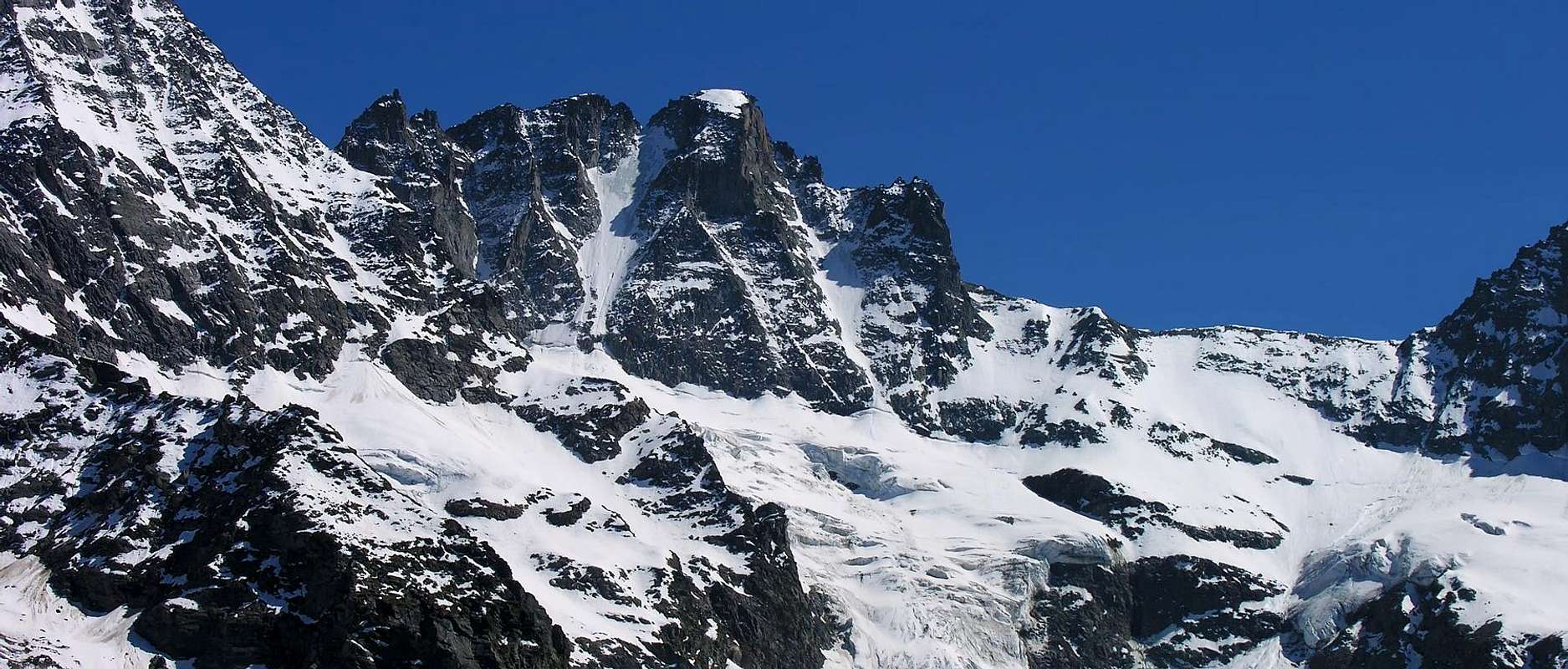
Lauson Tableland
Friendship doing with Ibex. When you climb the Rifugio Vittorio Sella with that mule full of people, which increases even more the level of dust, you know you're coming out of the Gran Paradiso. If you mean by this term that sea of ice that extends in a large district that goes from Punta Tsissettaz Gran Serra or Grand Sertz. The long North Buttress coming down from the Summit to form four elevations of the Piccolo Paradiso, the Herbetet and Grand Sertz slopes with other top seeds unknown reaching the Col Lauson or Lauzon. This opens up a new world, "more Human". What you see above? No, only those at the top to "Granpa", indeed even because they are hidden behind the Madonna, hidden from the true Top. But here you go back to normality with a multitude of people. Even too much. And you can also see many animals. In every sense. Everywhere marmots, chamois and ibex in herds that approach even up to two/three meters. Then blow with the nostrils to make it clear to you that you are bothering them and turn away from the Lake of the Lauson then move towards the Pastures of Herbetet, well below the Leonessa Bivouac. The close Col Lauson, over there in front and bottom of the vallon, awaits the masses, who, arriving punctually from Valnontey and Eaux Rousses Valsavarenche. Yes, because in the end we are still in Valnontey, two steps from Cogne, and this our subdivision is completely arbitrary. Hopefully it will not get upset the Mayor and its "Cogneins", inhabitants. Why, speaking tourists, this is the place that "attracts more". Then come Lillaz and Gimillan. Only that there are those who want to eat "polenta" (mash of cornmeal with chamois) and suede or lie in the sun on the terrace of Dzimillan to enjoy a coffee watching the postcard of Valnontey, that unfolds in the face. At best, ranging upward to fish to the Lakes Lussert or the Corona, but they come in a few; because my friend Antonio looks at them in the wrong way. If you make noise fish remain hidden and are not older. And that Antonio knows him well, for which thing, if they ask for road travel time, it doubles. So almost all come back. But if the "run" just bad, "pas des problèmes". Salt Lakes of Middle, Upper and High, where everyone disappear. Every now and then, out of desperation, continues towards Col des Laures. Those who goes to Lillaz, in addition to eating well, he went to see the Falls, arrives at the great boulder at the beginning of Valeille or, just walk, go to the Refuge "Sogno di Berdzé" ("Dream by Shepherd"). Some brave and "desperate" climb the ice falls, there are also Valnontey. However, coming back to us, if you want to go out when you're at Sella Shelter from the slopes of the mass is not a problem. Bypasses the hills of the Nera or the Rossa and you face the "La Grivola Bella" by Giosuè Carducci, in a large balcony above the Glacier Trayo or Trajo and still Traso and in a flash reach the Punta Rossa or even the Grivola. If you own the big problems and you are a little misanthropic, go left upwards to the wild walloon that leads to the Grand Sertz or, worse, you make a buck from large camel and join the Leonessa Bivouac. At the foot of The Herbetet and Becca of Montandayné. But you are a person who has great existential problems. Then, finally, we have already met the "Crazy People" that there are in a day from Valnontey. Perhaps under a beautiful and heavy snowfall. It also managed to arrive ...
1) - Valnontey Hamlet, Vittorio Sella Shelter (1.674m, 2.579m): Walk-Excursion with path-muletrack in Westsouthwest towards "Alpine Gardner Paradisia", Waterfall 1991 metres, Toule Pasture (2.111m) and Gran Lauson Alpages (2.506m), Casotto P.N.G.P. and refuge, at the beginning of Lauson Tableland (T/E/F; 1h'40/2h'00).
2) - Vittorio Sella Refuge: Walk-Excursion "Tour of Herbetet" with path-muletrack in South towards two Lauson Ponds (2.655m, 2.636m), Penna Sengia (2.660m), Grand Vallon, Plan de Resellaz (2.526m), l'Herbetet Alp (2.441m), Casotto P.N.G.P. (2.395m) and descent to fork 2.060 meters over Valnontey Torrent (T/E/F; 2h'00/2h'30).
3) - L'Herbetet Alp, Casotto P.N.G.P.: Excursion with
a) - muletrack-path before in West-northwest, after Southwest towards Lionello and Lucio Leonessa Bivouac (2.910m). Or from
b) - Valnontey, Vermiana, Pont des Eurfalets, fork 2.060 meters, Herbetet Alp also called "Casolari dell'Herbetet" (EE/F; 4h'30/5h'30 and by b) - 3h'45/4h'15).
4) - Lionello and Lucio Leonessa Bivouac: Climbing from bivouac in Southwest, through saddle 3.272 meters, crossing Tsasset Glacier, passing in East under Fenêtre de Tsasset (3.673m), to Becca di Montandayné (3.840m), by Northeast Face or Normal Route by Cogne (A/F+/PD-; 3h'45/4h'15).
5) - Leonessa Bivouac: Climbing from bivouac in West, through Eastern Crest of Herbetet (3.778m), or Standard Route by Cogne (A/PD-/PD; 3h'30/4h'00).
6) - Sella Refuge: Climbing pathless in Southwest through Lauson, Grand Vallon Glaciers to Gran Serra or Sertz (3.553m) by Northeast Face (A/F+; 3h'30/4h'00).
7) - Sella Refuge: Excursion with path-muletrack in West towards Lauson or Loson Hill (3.296m), between Pointe du Tuf/Becca de Vermianaz (T/E/F; 1h'45/2h'15).
8) - Sella Refuge: Climbing before with path in Northwest, after traces through moraines to Col de la Noire (3.487m), by South-southeast Slope (EE/A/F+; 2h'15/2h'45). Crossing possibilities to Punta Nera and Bianca (3.683m, 3.787m), by Northeast Ridge or in right to Punta Rossa (3.625m), by Northwest Face (A/F+; both 1h'00/1h'15).
9) - Sella Refuge: Climbing before with path in Northwest to fork 3.094 meters, after North to Rossa Hill (3.190m), by South Slope (EE/F+; 2h'15/2h'45). Crossing possibility to Punta Rossa (3.625m), doubling right East Wall connecting with North-northeast Ridge in altitude 3.364 meters (Route from Gratton Bivouac) (EE/A/F+; 1h'30/1h'45).
10) - Sella Refuge: Excursion before with path in Northeast to Tête Crocheneuille (2.638m), after North with traverse to saddle 2.492 meters, between Monte Herban (3.001m) and Pointe-de-l'Ouille (2.522m) (E/F; 1h'30/1h'45). Chance to get both the Tops by the Northeast Slope (Herban) or South Crest of l'Ouille (EE/F+; calculate 1h'30 more).
Facendo Amicizia con gli Stambecchi. Quando si sale al Rifugio Vittorio Sella con quella mulattiera piena di gente, che aumenta ancor più il livello della polvere, capisci che stai uscendo dal Gran Paradiso. Se per questo termine tu intendi quel mare di ghiacci che s'estende in un grande circondario che và dalla Punta Tsissetta alla Gran Serra o Grand Sertz. Il lungo Contrafforte Settentrionale che scende dalla Sommità formando le quattro elevazioni del Piccolo Paradiso, l'Herbetet ed il Grand Sertz digrada con altre cime semi sconosciute raggiungendo il Col Lauson o Lauzon. Qui s'apre un nuovo mondo, "più Umano". Cosa vedi in precedenza? Nessuno, solo quelli in vetta al "Granpa", anzi neppur loro perché son nascosti dietro la Madonnina, occultati dalla vera Sommità. Qui invece si torna alla Normalità con una infinità di Gente. Anche troppa. E si vedono anche molti Animali. In tutti i sensi. Marmotte dappertutto, camosci a branchi e stambecchi che s'avvicinano anche fino a due o tre metri. Poi soffian con le narici per farti capire che li stai disturbando e s'allontanano verso il Laghetto del Lauson per poi indirizzarsi verso i pascoli dell'Herbetet, ben sotto il Bivacco Leonessa. Lo stretto Col Lauson, laggiù davanti ed in fondo al vallone, attende le masse, che, puntualmente arrivano da Valnontey e da Eaux Rousses in Valsavarenche. Si, perché alla fin fine siamo ancora nella Valnontey, a due passi da Cogne, e questa nostra suddivisione risulta completamente arbitraria. Speriamo che non si arrabbin il Sindaco ed i "Cogneins". Perché, turisticamente parlando, questo è il posto che "tira di più". Poi vengon Lillaz e Gimillan. Soltanto che là van quelli che voglion mangiar polenta e camoscio oppure stendersi al sole sui dehors di Dzimillan per gustarsi un buon caffé guardando la cartolina della Valnontey, dispiegantesi a fronte. Al massimo van sù a pescare ai Laghi Lussert od al Corona, ma arrivan pochi; perché il mio amico Antonio li guarda in malo modo. Se fan baccano i pesci rimangono nascosti e non vengon sù. E questo Antonio lo sà bene, per la qual cosa, se gli chiedon per strada il tempo di percorrenza, lo raddoppia. Così tornan quasi tutti indietro. Ma se gli "gira" proprio male, "pas des problèmes". Sale ai Laghi di Mezzo, di Sopra e Alto, dove spariscon proprio tutti. Ogni tanto, per disperazione, continua verso il Col des Laures. Chi invece và a Lillaz, oltre a mangiar bene, si reca a veder le Cascate, arriva al gran masso all'inizio della Valeille oppure, pochi a piedi, vanno al Rifugio "Sogno di Berdzé" o "Sogno del Pastore". Alcuni "bravi e disperati" salgon le belle cascate di ghiaccio, che ci sono pur in Valnontey. Però, tornando a noi, se quando sei al Sella vuoi uscir dalle piste della massa non é un problema. Scavalchi i Colli della Nera oppure della Rossa e ti trovi davanti "La Grivola Bella" di Giosuè Carducci, in un grande balcone al di sopra del Ghiacciaio del Trayo o del Trajo ed ancora del Traso e in un attimo raggiungi la Punta Rossa od addirittura la Grivola. Se proprio hai dei grandi problemi e sei un pò misantropo, vai a sinistra sù pel selvaggio vallone che conduce al Grand Sertz o, peggio, ti fai 'na bella cammellata e raggiungi il Bivacco Leonessa. Ai piedi dell'Herbetet e della Montandayné. Ma sei già persona con grandi problemi esistenziali. Poi, per finir, abbiam già incontrato dei "Mattacchioni" che lì ci van in giornata da Valnontey. Magari sotto fitta nevicata. E vi son anche arrivati ...
Vermiana-Pousset-Trajo-Nomenon's small Valleys
The Vallons most important & the recommended Excursions (17)
"Questi son posti per Fantasmi, Spiriti & Diavoli." Se incontri qualcuno sù da queste parti o é un Pover'Uomo che s'é sperduto, oppur n'Avventuriero con la A maiuscola. Ma pur Tu non scherzi, se é vero che stai Vagabondando da ste parti. Lasciamo perdere il primo vallone che sale agli Alpeggi del Pousset. Questa é zona sicura, adatta agli Escursionisti che salgon da Epinel o da Crétaz. Però nel primo caso l'attraversamento della foresta del Grand Bois, con quegli alberi secolari che sembra parlin, ed il successivo Villaggio Fantasma del Pousset Inferiore, con gli splendidi "Rascards" in legno totalmente abbandonati, qualche piccolo brivido già fan insorgere. Poi sopra tutto s'apre e si può andare all'antica Punta del Pousset, incombente su Epinel, Crètaz ed anche Cogne. Passando in mezzo a grandi, isolati e pigri stambecchi, adagiati sul sentiero, che a fatica concedono di sgomberare il passaggio. Più in sù, ma faticosamente lontano, troviamo il Bivacco Gratton che ci permette una facile traversata alla Punta Rossa guardando la Grivola e ricollegandoci con la precedente via dal Sella. Si, perché poi questa altri non é che la continuazione del Pianoro del Lauson; é soltanto "girata" più a Settentrione e di mezzo c'é l'erboso Monte Herban, accompagnato dalla lama rocciosa della Pointe-de-l'Ouille. Che contrasto! Il tutto sopra Cogne. Ma più in là verso Sudovest la musica cambia: un aspro e desolato vallone sale contro il Ghiacciaio del Trayo, sotto l'Arete des Clochettes" o Nordest, la Cresta Nord a guisa di "Scimitarra" e la bella Parete Nordest compresa tra le due, che lo arresta obbligandolo a girar ad Ovest. Il terreno diventa lunare ed il terminale Colle del Trayo, con le sue rocce sgretolate e color ocra, s'apre tra l'omonima sommità e la Punta Crevasse con di fronte la Cattedrale "Transilvanica" Gran Nomenon. L'ambiente diventa spettrale e soltanto il Bivacco Gontier, ingenuamente sdraiato tra pascoli verdeggianti, rassicura un poco facendo da contrasto all'incombenti seraccate della Grivola, alle frastagliate guglie del Nomenon, sicuramente abitate dai Diavoli, e l'Oceano di pietrame giù dai Colli Belleface e Charbonnière. La calata giù a Sylvenoire é in sintonia con quel sentierucolo tutto giravolte, come le scale a chiocciola di Notre-Dame. Immaginiamo la salita. Ah, non dimentichiamoci delle vipere che trovate giù anche in paese, arrotolate sul ciglio della strada, ormai in asfalto, di Sylvenoire ...
But what is the True & Sex Symbol of Cogne?
Ma qual'é la Montagna che meglio rappresenta Cogne e la sua Valle? Quella che fà "girar gli ormoni" ed esalta l'adrenalina per l'Alpinista? Quella che gli fà pensar che deve assolutamente ritornare in Val de Cogne perché la deve scalare ad ogni costo e che di notte non lo fà dormire. Logicamente Sua Maestà il Gran Paradiso. Risposta facile, scontata e quasi lapalissiana. Ma il mio nipotino Pietro non é daccordo. Per lui si tratta del Monte Bianco. Ma eravam seduti sulla panchina del piazzale di Lillaz e per lui tra Cogne e Lillaz non c'é differenza. Daltronde gli avevam detto che andavam in Val di Cogne e non in Val di Lillaz. Problemi di logica elementare. Ma il Monte Bianco che appar laggiù in fondo, come in una cornice, da qui non é così grande. Anzi il Penne Blanche, appena qui sopra, appare molto più maestoso. Sempre questione di logica razionale e ... di prospettiva. Però quando scendiamo a Cogne Pietro non ha più alcun dubbio. La Montagna più grande é sicuramente il Pousset, che qui pende sopra le nostre teste. Il Granpa neppur si vede e la Grivola ormai scompar nell'ombra del pomeriggio avanzante. Per chiarirgli l'idee lo portiamo sù a Gimillan. Da lì dovrebbe capire un pò meglio. Il Gran Paradiso rossastro si staglia baciato dall'ultimo sole d'inverno che però illumina solo una piccola fetta della sua Cresta Settentrionale, mentre la Parete Orientale ormai trovasi in ombra totale e non dice più niente. Lo stesso per le due Pareti Nord di Roccia Viva e della Becca di Gay ormai in pien sonno. Laggiù scintillano la Torre di Lavina e le Arolla, ma son troppo lontane. Sicuramente non "appartengono" a Cogne. Quando torniamo a Cogne Pietro ha decisamente deciso: é proprio il Pousset la Montagna più importante di Cogne. E, forse, aveva pienamente ragione ...

Campings
- Wild camping in the Parco Nazionale del Gran Paradiso is strictly forbidden!!!
Mountain Condition
- Meteo: you can find all the needed informations at the official site of the Valle d'Aosta Region:
- Valle d'Aosta Meteo
Red Tape
Within the borders of the P.N.G.P. (Parco Nazionale del Gran Paradiso), at the moment (summer 2004), dogs generally are not allowed, except on a couple of trails, and camping is forbidden (except for climbers from sunset till dawn). No fees are due.Books and Maps
BOOKS:- "Gran Paradiso itinerari escursionistici" di Franco Brevini, Ed. Musumeci, Luglio 1982.
- "Il Parco Nazionale del Gran Paradiso (Valli di Champorcher-Clavalitè-Saint Marcel-Laures-Cogne-Valsavarenche-Conca di Pila" di Giulio Berutto 3/volume 2°, I.G.C., Torino 1981, 2a Ed. 2000.
- "I Rifugi della Valle d'Aosta" di Stefano Ardito, Ed. Guide iter, Febbraio 2003.
- "A piedi in Valle d'Aosta" (Vol. 2), di Stefano Ardito, Ed. Guide iter, Giugno 2004.
- "Diari Alpinistici" di Osvaldo Cardellina e Indice Generale accompagnato da Schedario Relazioni Ascensioni 1964-2019 (inediti).
- "Guida dei Monti d'Italia-Gran Paradiso Parco Nazionale" E. Andreis, R. Chabod, M. C. Santis, Club Alpino Italiano/Touring Club Italiano, prima Ed. 1939; seconda Ed. 1963; terza Ed. 1980.
- "Guida delle Alpi Occidentali", di Giovanni Bobba e Luigi Vaccarone C.A.I. Sezione di Torino Volume II (parte II), 25 Maggio 1896.
- "Rifugi e bivacchi in Valle d'Aosta", di Cosimo Zappelli aggiornata da Pietro Giglio, Musumeci Editore, Luglio 2002.
MAPS:
- Kompass "Gran Paradiso Valle d'Aosta Sentieri e Rifugi" Carta Turistica 1:50.000.
- Enrico Editore Ivrea-Aosta "Gruppo del Gran Paradiso" 1:50.000.
- I.G.C. Istituto Geografico Centrale "Il Parco Nazionale del Gran Paradiso" 1:50.000.
- L'Escursionista "Valle di Cogne Carta dei Sentieri" (n° 10) 1:25.000.
- L'Escursionista "Tour de la Vallée de Cogne Grand Paradis" 1:25.000.
Important Information
- REGIONE AUTONOMA VALLE D'AOSTA the official site.
- FONDAZIONE MONTAGNA SICURA Villa Cameron, località Villard de la Palud n° 1 Courmayeur (AO) Tel: 39 0165 897602 - Fax: 39 0165 897647.
- SOCIETA' GUIDE ALPINE DI COGNE Tel. 347/9473526 – 328/1373728.
- A.I.NE.VA. (Associazione Interregionale Neve e Valanghe).
- A.IA.T. Cogne Gran Paradis via Bourgeois n° 34 Tel. 0165-74040. E-mail: aiat@cogne.org
- Ezio Sport articoli sportivi - via Bourgeois n° 64 Tel. 0165-74204.
Useful numbers
- Soccorso Alpino Cogne (SAR) Tel. 3482685406.
- Protezione Civile Valdostana località Aeroporto n° 7/A Saint Christophe (Ao) Tel. 0165-238222.
- Bollettino Meteo (weather info) Tel. 0165-44113.
- Bollettino Valanghe Tel. 0165-776300.
- Unità Operativa di Soccorso Sanitario Tel. 118.




